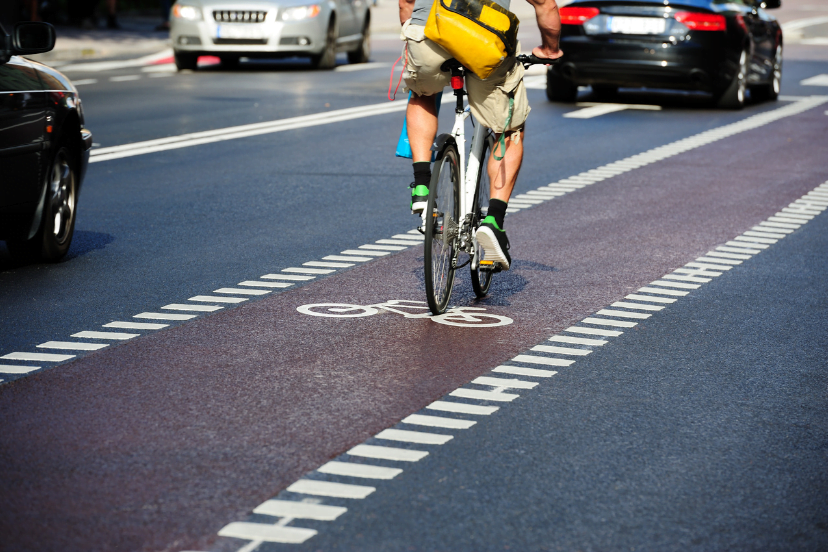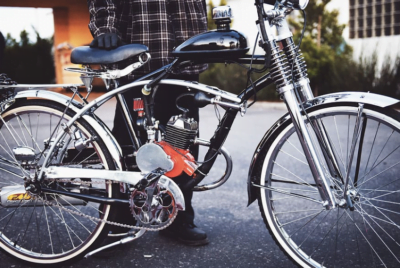Urban Design and Cycling Habits – How They Affect Our Health
Imagine a metropolis where cycling is an integral part of daily life; one in which every destination can be reached through pleasant, safe and stimulating bike rides. This isn’t just some utopian fantasy – many global cities are actively working towards making this dream come true! In todays fast paced world city design plays a crucial role in shaping our behavior patterns including how we choose to travel around town . Of all these options available for transportation modes cycling stands out as not only sustainable but also healthy while fostering community spirit too!
Urban design, cycling and community health are three seemingly unrelated topics that come together in this article. By examining international studies as well as real world examples we’ll explore how the layout of our neighborhoods can encourage biking while also promoting better physical fitness for everyone involved. We’ll then discuss ways to make these changes happen within your own community so you too can enjoy a more sustainable future filled with good health choices like cycling!
Urban Design and Cycling – A Connection
Urban design plays a crucial role in shaping our cycling habits. Its not just about having roads; its also about creating an environment that is safe, convenient and enjoyable for cyclists. We will explore some key urban design elements that impact how we cycle through cities today.
The presence of dedicated bike lanes is an essential element that encourages cycling. These designated spaces provide cyclists with a safe environment separate from motorized vehicles on the roadway network. By creating such facilities cities demonstrate their commitment towards promoting biking as one of the primary modes for transportation within urban areas like Copenhagen and Amsterdam have done successfully over time by establishing extensive networks of bike lanes across their respective regions.
Implementing traffic calming measures such as speed humps, roundabouts and narrowed roads can significantly enhance the safety and appeal of cycling. By slowing down motorized vehicles these measures decrease accidents while creating a more comfortable environment for cyclists on city streets. Portland Oregon serves as an example where numerous traffic calming measures have been implemented resulting in increased rates of cycling within its boundaries.
The convenience of proximity is a significant factor in determining whether or not people choose to cycle. Mixed use developments provide easy accessibility for various purposes such as commuting, running errands and visiting local cafes – all within walking distance from home. Barcelona’s superblock model demonstrates how these types of spaces can encourage cycling by promoting active transportation options over driving cars.
Urban design features that promote cycling include secure bike parking facilities, cyclist friendly traffic signals and aesthetically pleasing elements such as tree lined streets and attractive scenery. These features work together to create an environment where biking is not only safe but also enjoyable for all riders.
A recent study titled “Perceived neighborhood environmental attributes associated with adults’ transport related walking and cycling: Findings from the USA, Australia, and Belgium” highlighted how important urban design features are in promoting active modes of travel. The research revealed that there is a strong connection between these elements and individuals choosing to cycle for their daily commute. This information provides valuable insights into creating more sustainable communities through better designed infrastructure.
Urban design is a critical component in promoting cycling as an accessible and appealing mode of transportation. By taking into account cyclists’ needs during city planning processes cities can not only increase their ridership rates but also reap the benefits for community health and sustainability. The advantages of cycling extend beyond individual fitness; they contribute significantly to improving overall well being within our communities. We will explore these benefits further in subsequent sections.
Cycling – A Healthy Choice
Cycling is not just a means of transportation or leisure activity; it’s an opportunity for better health. Regular cycling offers numerous physical and mental wellness benefits making it truly holistic in nature. So why wait? Start pedaling towards improved overall wellbeing today!
Cycling is a versatile form of exercise that engages multiple muscle groups while promoting cardiovascular health. Its low impact nature makes it suitable for people with joint issues or those looking to maintain an active lifestyle without putting too much strain on their bodies. Moreover cycling has been shown by the Mayo Clinic as effective in preventing chronic conditions such as heart disease, stroke and diabetes when practiced regularly. Whether you’re just starting out or have years of experience under your belt – cycling can be tailored to fit any level of ability making it accessible for all ages! So why not hop onto two wheels today?
Cycling offers significant mental health benefits that should not be overlooked. The production of endorphins – natural mood boosters- is stimulated by this form of exercise just like other physical activities do. It helps alleviate stress levels, improve sleep patterns and lift overall spirits in a positive way. According to research published in Lancet Psychiatry journal regular cyclists experience fewer days with poor mental wellbeing compared to those who don’t cycle regularly. Therefore incorporating cycling into your routine could have immense value for maintaining good psychological health.
Cycling has numerous benefits for communities beyond just transportation. It contributes to improved public health by reducing air pollution and traffic congestion resulting in cleaner air quality and less noise pollution. Additionally cycling is associated with lower rates of obesity as well as lifestyle related diseases among residents who engage regularly in this activity compared to those who do not. The positive impacts on both individuals’ physical wellbeing and overall community welfare make it clear why promoting biking should be a priority for all local governments seeking sustainable growth while improving their citizens’ lives simultaneously.
Dr. Richard Patterson, an expert on public health from the University of Cambridge emphasizes that cycling is a great way to promote physical and mental wellness among populations. He states “Urban design plays a crucial role in encouraging people to cycle more often by making it safe & convenient – leading directly to increased participation rates resulting ultimately in improved overall health outcomes.”
Cycling is an activity that benefits both individuals and communities alike. By promoting cycling through thoughtful urban design we can create healthier, happier and more sustainable neighborhoods. In this section we will explore real world examples of cities that have successfully implemented bike friendly designs and examine the impact these changes had on their communities.
Bike-Friendly Cities – Case Studies
Urban design has proven to be an effective tool for promoting cycling and improving community health as well as sustainability. Several cities have adopted this approach with impressive results. Lets explore some notable examples from around the world.
Copenhagen, Denmark has earned its reputation as one of the most bike friendly cities in the world thanks to innovative urban design that promotes cycling. The city boasts an extensive network of bike lanes including “Cycle Super Highways” connecting outer regions with the city center. Additionally Copenhagens public transportation is designed for cyclists and there are plenty of secure parking options available throughout town. As a result over half of all commutes within this vibrant metropolis take place on two wheels rather than four – contributing positively towards lower rates of air pollution related illnesses while also improving overall quality of life.
Amsterdam, Netherlands is a city where cycling has become an integral part of daily life thanks to its bike friendly urban design. The compact size and flat terrain make it easy for residents to use bikes as their primary mode of transportation while the extensive network of bike paths provides safe routes throughout town. Moreover Amsterdam prioritizes cyclists in traffic hierarchies which further encourages people to choose this eco-friendly option over cars or public transit. As such two thirds of all trips taken within central areas are made by bike alone! This shift towards sustainable travel has had numerous benefits including reduced emissions levels and improved air quality making Amsterdam one of Europes most livable cities today.
Portland, Oregon is a shining example of how urban cycling can be promoted effectively. The city has invested heavily in bike lanes and other infrastructure such as parking spaces for cyclists along with measures to calm traffic flow – all of which have contributed significantly towards increasing the number of people who commute by bicycle within its boundaries compared with any other major US metropolis! This dedication from authorities has also resulted in lower carbon emissions levels alongside improved community health outcomes overall making it an ideal destination for those seeking sustainable transport options while enjoying their daily routine activities without compromising on quality living standards or wellbeing factors simultaneously!
Urban design can play a crucial role in promoting cycling and achieving community health benefits. However, this vision requires overcoming specific challenges that we will explore further on. The case studies presented show how successful cities have tackled these obstacles to create thriving bike friendly environments. With careful planning and implementation of effective strategies – such as infrastructure improvements or education campaigns- other cities could follow suit for better outcomes all around.
Bike-Friendly Cities – Challenges and Solutions
Becoming a bike friendly city has numerous advantages but the journey towards achieving this goal is not without its hurdles. Here are some of these obstacles and potential solutions that cities can consider:
Investing in cycling infrastructure may seem like an expensive endeavor initially. However, its crucial to view this expense as a long-term investment with significant benefits that outweigh the costs involved. By building bike lanes and parking facilities for cyclists you can help create healthier communities while reducing traffic congestion levels leading to less pollution emissions over time. To make it more feasible financially some cities have adopted strategies such as starting small by focusing on high impact areas first before expanding gradually when funds become available.
For many people safety is a top priority when considering cycling as an alternative mode of transportation. However without dedicated bike lanes and traffic calming measures in place alongside motorized vehicles cyclists may feel unsafe on the roadways. To address this issue cities can prioritize creating protected bike lanes while implementing laws that protect cyclist rights within their jurisdictions. Additionally public awareness campaigns should be implemented to educate drivers about sharing roads safely with bikers. By taking these steps we can create safer streets for everyone involved.
Transitioning towards a more bike friendly city design can be met with resistance from residents who are accustomed to car centric layouts. Engaging in community outreach and dialogue is crucial for addressing these concerns effectively. Cities should consider hosting public meetings where proposed changes may be discussed openly while highlighting their potential benefits as well as allaying any fears or doubts that might arise during this process. Pilot projects could also serve as valuable tools for demonstrating the viability of new ideas before implementing them on larger scales. With proper communication channels established between decision makers and citizens alike, transitioning into biking friendly cities becomes not only feasible but desirable too!
Bike friendly policies and infrastructure require political will to succeed. Advocacy groups can help make this happen by raising awareness about cycling benefits while lobbying for bike friendly measures. With their efforts they can gain crucial support from policymakers who are essential in implementing these changes effectively. The results? Safer streets, healthier communities – everyone wins!
Though these challenges may seem daunting they are not insurmountable. By employing strategic planning techniques and engaging with the community while garnering political support cities can successfully transition into bike friendly havens that offer numerous benefits for both health and sustainability. With determination and dedication any city can achieve this goal.
Conclusion
The impact of urban design on cycling habits and overall health cannot be overstated. From dedicated bike lanes to traffic calming measures the blueprint for our cities can either encourage or discourage us from hopping onto two wheels. However as we’ve seen in Copenhagen, Amsterdam, and Portland with thoughtful planning and community engagement it is possible to transform neighborhoods into pedal powered paradises. With this knowledge let us strap on our helmets hop onto our bikes and work towards a greener more sustainable future that benefits both ourselves and generations yet unborn. Your local environment will thank you!
References:
“Perceived neighborhood environmental attributes associated with adults’ transport-related walking and cycling: Findings from the USA, Australia and Belgium.” [Link to Study]
“Cycling and Health: An Exploratory Study.” [Link to Study]
“Cycling: Health benefits and risks.” [Link to Article]
“Exercise and mental health: More is not always better.” [Link to Study]
“Copenhagen City of Cyclists: Bicycle Account 2018.” [Link to Report]
“Amsterdam: The Bicycle Capital of the World.” [Link to Article]



